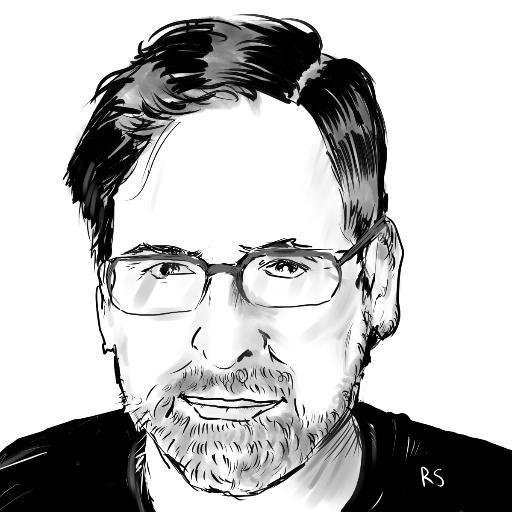A lot can happen in a decade. At the beginning of the 1950s, comics were selling millions of copies to everyone from kids to returning soldiers and housewives. Ten years later, the industry had been decimated, reduced to juvenilia by Wertham and the reign of censors. The sixties saw Marvel, a third-rate press on the brink of ruin in 1960, come out of nowhere to make comics hip and topple DC Comics and Archie Comics from their perch as best-sellers. From 1980-1990, the direct market supplanted the newsstand. And so on.
So what are the biggest changes that took place in our industry between 2010 and today? Here are a few that make my list.
Demographic Shifts in the Comics Market. The biggest and most obvious evolution of the past 10 years has been the arrival of a new generation of comic readers, making their presence felt online, at conventions, and at the cash register. This cohort, raised on manga, Harry Potter and the more inclusive pop culture of the 1990s and early 2000s, has made folks like Raina Telgemeier and Kazu Kibuishi some of the top-selling cartoonists in the world and has driven a wider shift toward diversity of representation in all comics-based media. It’s also created a different economy at fan shows, with more emphasis on cosplay and community, and less on traditional collecting. In the 2020s, this rising force in fandom will continue to replace aging Boomers and GenXers, reinventing comics in the image of their tastes and media consumption preferences.
The "Endless Summer" of Superhero Blockbusters. Pre-Avengers (2012), one could reasonably say the jury was still out on the long-term durability of the "comic book movie" as a cinematic genre. As it turned out, doubts were unfounded. The teens were the superhero movie decade, particularly for Marvel, which built a juggernaut that must have exceeded even Disney’s wildest dreams. That’s left us with a global audience of billions who know these characters well enough to discuss them casually, wear their logos, and sign up for media services that promise more content. Fundamentally, it means that the superheroes that many of us grew up with as niche culture are now irretrievably part of the mainstream, and I think we’ll be continuing to grapple with the implications of that for a generation.
The Rise of the Multi-Billion Dollar Fan Convention Industry. San Diego Comic-Con began the aughts with an attendance of about 50,000 and grew by leaps and bounds to hit its capacity of ~145,000 by 2009. In doing so, it created the template for other shows around the country to massively scale up by integrating celebrity appearances, media previews, cosplay competitions, brand activations and other geek-bait, just at the moment when comic-based media was taking over the box office and the airwaves. By 2015, I estimated this market as representing about $550K in gross ticket sales alone, with an economic impact in the $4-4.5 billion range. Since then, the industry has proliferated, consolidated and globalized, becoming an important part of the "experience economy." Is this business resilient enough to weather an economic downturn? We’ll see, sooner or later.
The Political Polarization of Fan Culture. Comics have always had some political undercurrents: the choice of who to make the good guys and bad guys is inherently political, as pioneers like Jerry Siegel and Jack Kirby certainly realized. But fan culture largely avoided the partisan schisms of wider society, at least when fan topics were being discussed. No longer. The 2014 toxic eruption known as Gamergate hit videogame fandom first, legitimizing online harassment of women and a kind of strident bully culture. Inevitably, it spread to comics, with some fans becoming radicalized into opposition to diversity, representation and social justice, or committed to "triggering the libs," and others taking to social media to call out and "cancel" creators, fans and companies taking positions or engaging in behavior contrary to their standards. Given the wider political culture in the English-speaking world right now, this situation looks like it will get worse before it gets better.
Comics Become Part of the Global Economy. It didn’t take the rest of the world long to notice what Marvel/Disney were doing in creating a limitless multi-billion-dollar entertainment franchise out of piles of old funnybooks. Meanwhile, rising markets, economic growth and changes to tax policies to favor corporations and capital owners created a surplus of hundreds of billions of dollars at the top of the economy looking for a productive outlet. Consequently, the teens saw a rising number of investments in comic-based IP, publishers, and distribution channels (mostly new mobile and digital platforms) from big economic players, including investors from China taking a stake in Valiant Entertainment and Dark Horse Comics. The streaming wars of the last few years, with giant, wealthy companies over-investing in content to avoid losing out to competitors, has just been gasoline on this fire. If you ask me to pick the trend that looks least sustainable over a two to five-year horizon, this is it. And when the shakeout happens, it’s going to be ugly with a capital "U."
Digital Distribution Arrives and Changes Practically Nothing. Sometimes the dog that doesn’t bark is a story. Remember how upset everyone in retail and publishing was in 2010 and 2011 as comiXology, Graphic.ly and of course iVerse were threatening to disrupt everything by making comics available digitally on phones and tablets? ComiXology predictably won out in that struggle, which seems positively prehistoric just 8 years later, and sold themselves to Amazon at the very top of the market, when year-over-year market share and revenue gains were at their peak. And since then? Flatline (at least for download-to-own), give or take, with the value of digital back issues approaching zero thanks to unlimited subscription plans and Humble Bundles. Of course, just because massive disruption didn’t happen doesn’t mean it will never happen, especially with new readers coming on board with fewer preconceptions about how they consume their graphic fiction. But it’s interesting how the hurricane that destroyed the music and home video markets somehow spared comics, at least for the most part.
Graphic Novels Become the Format of Choice. No trend in comics publishing was more overdetermined than this. Graphic novels are not only a superior way to read long-form stories, they fit neatly into a pre-existing sales channel of bookstores, libraries and academic institutions that’s broader and deeper than the Direct Market. The range of content available in trade editions was already booming at the start of the decade and benefited from many of the other trends listed here, even as brick-and-mortar retail generally was facing unprecedented headwinds. As more quality graphic novels appeared in print, the stigma of "comics as kid stuff" faded, and more mainstream publishers got in on the act, further legitimizing the format. In addition, publishers found new sources of revenue repackaging existing material in increasingly deluxe and expensive editions, or in pulling together discount trade paperbacks to let new readers climb on board ongoing series.
There are a couple of implications here. First, the divergence between the kind of content that sells well in the book channel (manga, young readers and literary titles mostly) and that which traditionally sells well in the direct market (collected story arcs, superheroes, archival editions) is breaking the distribution system apart like a wishbone, and data from this year shows that it’s the book channel that’s now getting the bigger half. That’s a trend likely to continue into the 2020s.
Besides the channel issue, the other long-term problem is that neither the book industry nor the comic industry, much less the creative professional community, is set up to handle the kind of lead times and expense of going directly to trade for long-form original material. We need serialization to get creators and publishers paid by the month, although apparently selling too many single issues is the kiss of death for retailers. This looks like the thing that will break first in the 20s (although we’ve been saying that for decades). So that’s my decade wrap-up. What does the future have in store? I’ll have my predictions column up next.
The opinions expressed in this column are solely those of the writer, and do not necessarily reflect the views of the editorial staff of ICv2.com.
Rob Salkowitz (@robsalk) is the author of Comic-Con and the Business of Pop Culture.

Column by Rob Salkowitz
Posted by Rob Salkowitz on December 17, 2019 @ 12:39 am CT



